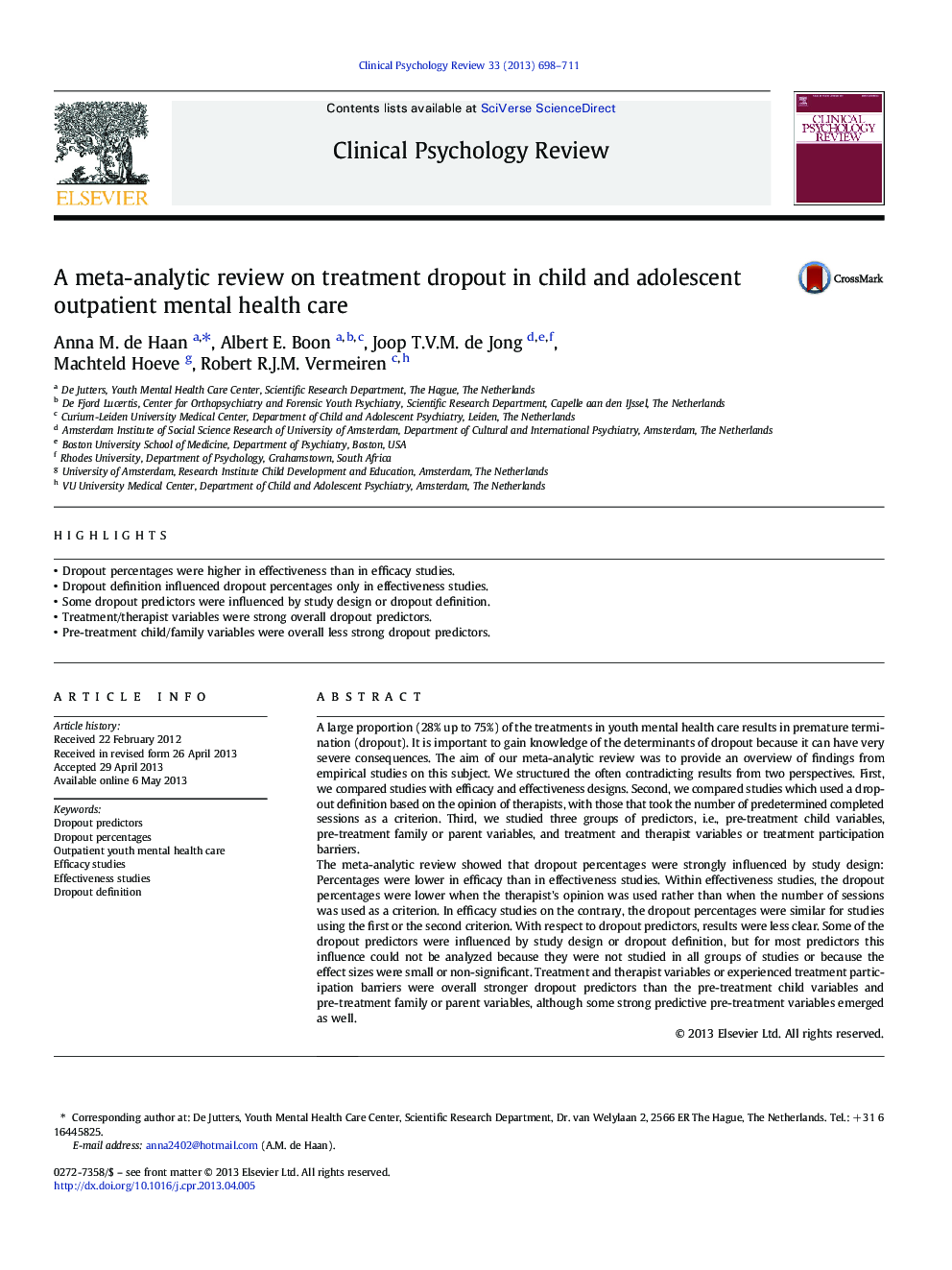| کد مقاله | کد نشریه | سال انتشار | مقاله انگلیسی | نسخه تمام متن |
|---|---|---|---|---|
| 903639 | 916574 | 2013 | 14 صفحه PDF | دانلود رایگان |

• Dropout percentages were higher in effectiveness than in efficacy studies.
• Dropout definition influenced dropout percentages only in effectiveness studies.
• Some dropout predictors were influenced by study design or dropout definition.
• Treatment/therapist variables were strong overall dropout predictors.
• Pre-treatment child/family variables were overall less strong dropout predictors.
A large proportion (28% up to 75%) of the treatments in youth mental health care results in premature termination (dropout). It is important to gain knowledge of the determinants of dropout because it can have very severe consequences. The aim of our meta-analytic review was to provide an overview of findings from empirical studies on this subject. We structured the often contradicting results from two perspectives. First, we compared studies with efficacy and effectiveness designs. Second, we compared studies which used a dropout definition based on the opinion of therapists, with those that took the number of predetermined completed sessions as a criterion. Third, we studied three groups of predictors, i.e., pre-treatment child variables, pre-treatment family or parent variables, and treatment and therapist variables or treatment participation barriers.The meta-analytic review showed that dropout percentages were strongly influenced by study design: Percentages were lower in efficacy than in effectiveness studies. Within effectiveness studies, the dropout percentages were lower when the therapist's opinion was used rather than when the number of sessions was used as a criterion. In efficacy studies on the contrary, the dropout percentages were similar for studies using the first or the second criterion. With respect to dropout predictors, results were less clear. Some of the dropout predictors were influenced by study design or dropout definition, but for most predictors this influence could not be analyzed because they were not studied in all groups of studies or because the effect sizes were small or non-significant. Treatment and therapist variables or experienced treatment participation barriers were overall stronger dropout predictors than the pre-treatment child variables and pre-treatment family or parent variables, although some strong predictive pre-treatment variables emerged as well.
Journal: Clinical Psychology Review - Volume 33, Issue 5, July 2013, Pages 698–711